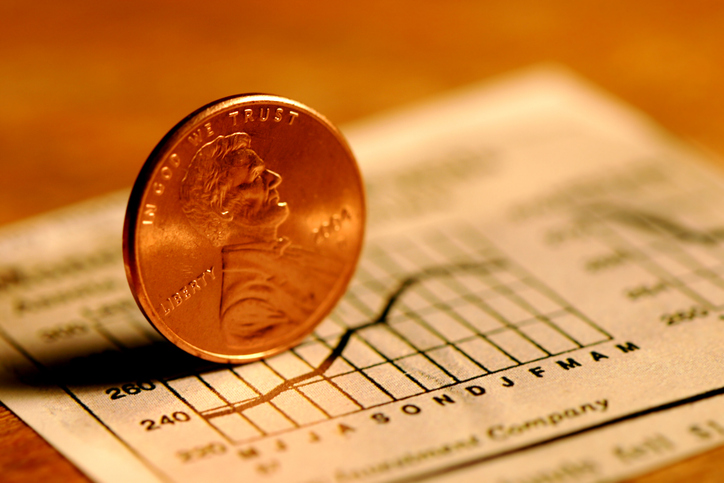McDonald's Stock: How Small Changes Have Led to 100,000% Returns
McDonald's incremental operating improvements have added up over the years, sending the company's long-term profitability soaring.


Editor's note: This is part one of a 13-part series about companies whose shares have amassed 100,000% returns for investors and the path taken to generate such impressive gains over the long term.
The 100,000% club is just what it sounds like: companies whose shares have appreciated more than 100,000 percent.
Why did I choose this number? After all, a 1,000% percent return, the old 10-bagger, is pretty spectacular. So is 5,000% (Google) or 25,000% (Starbucks) or 50,000% (Nike).
From just $107.88 $24.99 for Kiplinger Personal Finance
Become a smarter, better informed investor. Subscribe from just $107.88 $24.99, plus get up to 4 Special Issues

Sign up for Kiplinger’s Free Newsletters
Profit and prosper with the best of expert advice on investing, taxes, retirement, personal finance and more - straight to your e-mail.
Profit and prosper with the best of expert advice - straight to your e-mail.
But I selected a return of 100,000 percent or more because 100,000 percent turns $1,000 into $1 million. And with a comfortable retirement often measured in multiples of $1 million, a return of 100,000% will send many savers well on their way to financial security. For others, retirement is the penultimate goal. Primarily, they want to pass wealth on to their children and grandchildren.
Imagine passing on $1 million to a grandchild who uses it to start a business that ultimately returns 100,000%? Or another grandchild who finds, say, the next Walmart and earns 300,000% and turns the grandparents' $1,000 into $3 billion in just three generations. That a billion-dollar fortune could be amassed with passive investments is testimony of the strength and opportunity of our country as well as the skill and dedication of American workers and management.
Notably, a 100,000% return is not rare. The list of stocks featured in this series is not exhaustive, but it is well-researched. You may well find other stocks that have reached this milestone. For instance, Netflix has since crossed the 100,000% threshold since we did this research.
Also, you may come across stocks where the reported returns are at odds with what we have found in our research. There is differing data out there on popular stock platforms. We dug deeply, however, conducting custom price performance searches that extended beyond what is typically reported to produce this list.
In addition to being fairly prevalent, it should – no must – be noted these opportunities are completely accessible. Anyone with $1,000 who is willing to put it at risk can enter the fray.
One obstacle to turning say $10,000 into $10 million is the success that unfolds along the way. If a holding of say Home Depot goes from $10,000 to $5 million, and this $5 million constitutes 67% of the investor's $7.5 million portfolio, it sets up a situation that is difficult for their adviser.
If the client, upon advice, sells half of their position, and the Home Depot return climbs to 100,000%, then the client misses out on $2.5 million of gains. If the adviser tells the client to hang in there, which I would never do, and the company implodes, the investor could lose everything. Ultimately, when gains reach these levels, the decision to sell often comes down to the tax impact of taking say a $2 million long-term capital gain.
Over the course of this series, we will feature the stories of these companies and some reasons they reached great heights. One note of caution is merited, however. Not all, but many of the companies in this series got there through making many acquisitions, and you might be left with the impression that the path to 100,000% returns goes through M&A. It doesn't.
The companies in this series that have grown through mergers and acquisitions are very, very good at it. But integrating a company that has been acquired presents challenges that can get the better of even the most skilled management teams. I'd speculate that mergers and acquisitions are the demise of more companies than their salvation by a factor of 100. So, when you go looking for the next member of the 100,000% club, be wary of candidates that are buying their way to growth, and keep their fundamentals in mind.
Also of importance: the returns shown below come from share appreciation. It does not include the return from dividends, i.e. the returns we cite are not the total return. Many, older established companies such as Walmart pay regular dividends and grow them. Not all of them do, however. For instance, Amazon does not.
However, for companies that do pay dividends, the contribution they make to the total return can be truly spectacular. Corroborating proof of the contribution that dividends make to the total return, is that, over the long haul, dividends have contributed about 40% of the total return of the S&P 500 Index.
In good years, the 1.8% average yield on the Standard & Poor's 500 Index does not seem material. But accounting for the lean years, and the years with losses, the dividends turn out to be a major component of the total return investors enjoy in S&P 500 stocks.
Accordingly then, for the companies featured in our 100,000% club, the return for the dividend payers is at least 100,000% and in some cases, this is a conservative estimate.
McDonald's stock: Small changes drive big returns
McDonald's (MCD) just gained entry into the 100,000% club. As of the end of 2024, it was hovering at about 99,000%.
The primary reason that MCD has returned share appreciation of 100,000% is that their business model has been profitably honed since Ray Kroc took over from the McDonald brothers in 1961. For more than 60 years the company has continuously made incremental improvements. Though small in the sense that they have added just basis points to profitability in some cases, these basis points have added up to material improvements in profitability over the decades.
To see the impact of incremental improvement over time, consider that McDonald's operating margin has grown from 35% in 2014 to 53% in 2024. And beneath these improvements, McDonald's market will always be there – people need to eat – and it is always growing. Consumers might abandon gas-powered cars for electric vehicles (EVs) delivering a decline in profitability to the likes of Ford, but abandoning dinner? Never.
What are some of these incremental changes? Breakfast all day, dollar menu items, Happy Meals for kids, the Big Arch burger (largest ever), additional drive-through lanes, fresh rather than frozen patties, reducing food waste, self-serve beverages and kiosk ordering.
It doesn't always take breakthroughs in technology to create and then dominate new markets. Sometimes continuous improvement in processes will deliver continuous improvement in profitability, and over time, a return of 100,000%.
Note: This content first appeared in Louis Navellier's latest book, The Sacred Truths of Investing: Finding Growth Stocks that Will Make You Rich, which was published by John Wiley & Sons, Inc.
Related content
Profit and prosper with the best of Kiplinger's advice on investing, taxes, retirement, personal finance and much more. Delivered daily. Enter your email in the box and click Sign Me Up.

-
 I'm want to give my 3 grandkids $5K each for Christmas.
I'm want to give my 3 grandkids $5K each for Christmas.You're comfortably retired and want to give your grandkids a big Christmas check, but their parents are worried they might spend it all. We ask the pros for help.
-
 If You're Not Doing Roth Conversions, You Need to Read This
If You're Not Doing Roth Conversions, You Need to Read ThisRoth conversions and other Roth strategies can be complex, but don't dismiss these tax planning tools outright. They could really work for you and your heirs.
-
 Could Traditional Retirement Expectations Be Killing Us?
Could Traditional Retirement Expectations Be Killing Us?A retirement psychologist makes the case: A fulfilling retirement begins with a blueprint for living, rather than simply the accumulation of a large nest egg.
-
 I'm a Financial Planner: If You're Not Doing Roth Conversions, You Need to Read This
I'm a Financial Planner: If You're Not Doing Roth Conversions, You Need to Read ThisRoth conversions and other Roth strategies can be complex, but don't dismiss these tax planning tools outright. They could really work for you and your heirs.
-
 Could Traditional Retirement Expectations Be Killing Us? A Retirement Psychologist Makes the Case
Could Traditional Retirement Expectations Be Killing Us? A Retirement Psychologist Makes the CaseA retirement psychologist makes the case: A fulfilling retirement begins with a blueprint for living, rather than simply the accumulation of a large nest egg.
-
 I'm a Financial Adviser: This Is How You Can Adapt to Social Security Uncertainty
I'm a Financial Adviser: This Is How You Can Adapt to Social Security UncertaintyRather than letting the unknowns make you anxious, focus on building a flexible income strategy that can adapt to possible future Social Security changes.
-
 I'm a Financial Planner for Millionaires: Here's How to Give Your Kids Cash Gifts Without Triggering IRS Paperwork
I'm a Financial Planner for Millionaires: Here's How to Give Your Kids Cash Gifts Without Triggering IRS PaperworkMost people can gift large sums without paying tax or filing a return, especially by structuring gifts across two tax years or splitting gifts with a spouse.
-
 'Boomer Candy' Investments Might Seem Sweet, But They Can Have a Sour Aftertaste
'Boomer Candy' Investments Might Seem Sweet, But They Can Have a Sour AftertasteProducts such as index annuities, structured notes and buffered ETFs might seem appealing, but sometimes they can rob you of flexibility and trap your capital.
-
 AI Stocks Lead Nasdaq's 398-Point Nosedive: Stock Market Today
AI Stocks Lead Nasdaq's 398-Point Nosedive: Stock Market TodayThe major stock market indexes do not yet reflect the bullish tendencies of sector rotation and broadening participation.
-
 Got $100 to Gamble? These Penny Stocks Could Be Worth the Ride
Got $100 to Gamble? These Penny Stocks Could Be Worth the RideVolatile penny stocks are high-risk plays with potentially high rewards. If you have $100 you can afford to lose, these three names are worth a look.
-
 Quick Question: Are You Planning for a 20-Year Retirement or a 30-Year Retirement?
Quick Question: Are You Planning for a 20-Year Retirement or a 30-Year Retirement?You probably should be planning for a much longer retirement than you are. To avoid running out of retirement savings, you really need to make a plan.